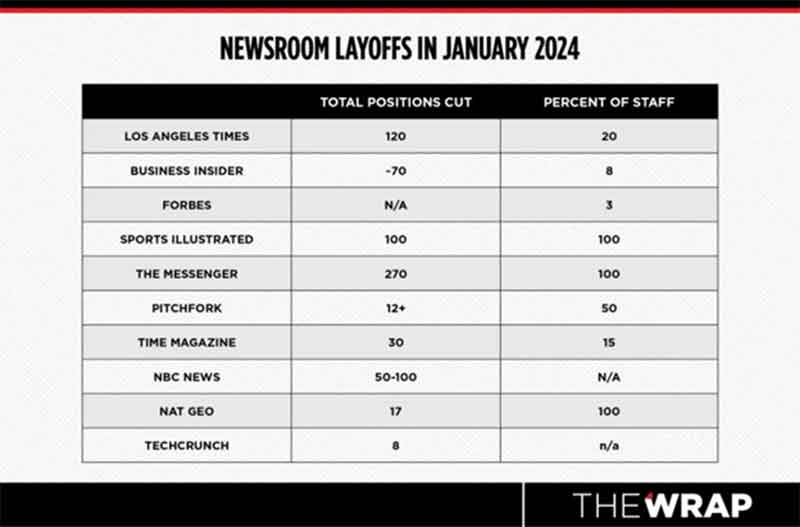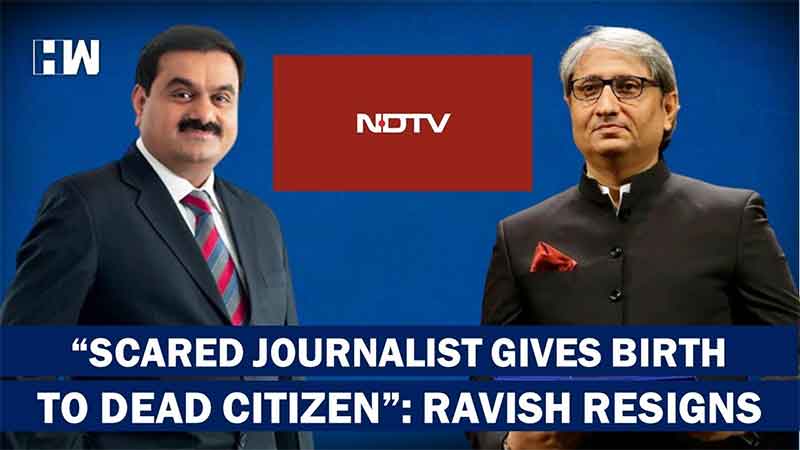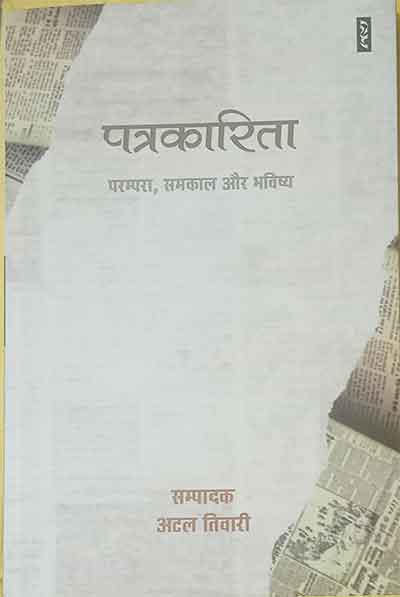
The massive financial downturn caused by the COVID-19 infection around the world is not new news today. Renowned economists have already written numerous articles on the impact of the financial crisis on society in the future. Many studies by researchers have previously been published. Researchers, considering various industries and service sectors, have concluded how many thousands or millions of rupees will be lost in the present time and also in the near future. The same industry, which publishes economic analyses, is plagued by a strange indifference. There is hardly any report that covers the damage inflicted by the COVID-19 on the electronic and print media.
The global economy has been suffering from a recession for some time. The news of the COVID-19 virus broke out on the first day of this year. Even before that, towards the end of 2018, media industry and especially newspapers in many countries took different cost-cutting measures. Salary cuts and layoffs of journalists and non-journalistic employees, as well as the discontinuation of publication of paper version, gradually became a regular occurrence. In this context, the spread of the coronavirus infection has added to the misery. Need for social distancing, suggested as one of the tools to prevent the transmission of this new disease, was used to clamp lockdown in different countries. Public life, factories and trade and commerce came to a standstill. The crisis also engulfed the media industry.
Many publication groups stopped printing magazines and started online editions. Newspaper advertisements were stopped due to the closure of industry and business, and employees were forced to take responsibility for the losses. In this formula, pay cuts became the norm in India’s leading media houses. And the layoffs started step by step. In general, the handful of media outlets that hold the lion’s share of advertisements have emerged as pioneers in pay cuts and layoffs. And it was once more proved that no government loses sleep over salary reductions of workers. I do not know the amount of financial loss to the newspaper or media houses during the COVID-19 crisis. As a journalist, I know cases where a percentage of a colleague’s salary has been cut or s/he has lost her/his job at the end of a long career. There is no protest against this injustice, and the idea of resistance is like an illusory dream because the word ‘unity’ does not exist in the dictionary of Indian media workers.
In addition to going through salary cuts and job threats, journalists faced significantly increased attacks by the government and local administration during the crisis of the COVID-19 infection. On 15th June, the Rights and Risk Analysis Group (RRAG) in Delhi released a report. The title is ‘India: Media’s Crackdown During COVID-19 Lockdown’. According to their report, between 25th March and 31st May, as many as fifty-five journalists had to face arrests, registration of FIRs, police summons or show causes, physical harassment or intimidation for reportage on the administrative mismanagement, negligence, and the plight of migrant workers. And this number is gradually increasing. Top three in the list of the places based on the attack on journalists are the BJP-ruled Uttar Pradesh (11), Union Territory of Jammu and Kashmir (6) and Himachal Pradesh (5). Of course, the question of this attack on journalists reflects the same mentality of different state governments, irrespective of identity and ideology of the party in power. Thus we find that the list includes four each in Tamil Nadu, West Bengal, Odisha, Maharashtra, two each in Punjab, Delhi, Madhya Pradesh & Kerala and one each in Andaman & Nicobar Islands, Arunachal Pradesh, Assam, Bihar, Chhattisgarh, Gujarat, Karnataka, Nagaland and Telangana. Not only in the BJP-ruled Uttar Pradesh, but the journalists are also subjected to arrest and administrative harassments in Trinamool Congress-ruled state of West Bengal, Congress-ruled Punjab or Left Front-ruled Kerala. The Central Government wanted to ensure strict legal control over media personnel and wanted media, including social media, to toe its line. The Government of India (GOI), during the hearing of a writ petition on the issue of migrant workers, pleaded to the Supreme Court on 31st March to suppress the freedom of expression relating to COVID-19. The GOI made this request to prevent “deliberate or inaccurate” reporting by the media, particularly web portals, which have “serious and inevitable potential of causing panic in a larger section of the society”. Though the Supreme Court had outright rejected this demand, the intention of the government in choking the independent voice of the media became clear to all.
When the desire to enforce 100 per cent control of the media could not be fulfilled centrally, the State governments came down on the journalists to take away the freedom that is the mainstay of the “fourth pillar” of democracy. The data given earlier on the number of attacks on journalists, based on the report by the Rights and Risk Analysis Group, is documented until 31st May. However, even after that, many news of journalist harassments have come to light. While I was preparing this article, information came to me that the Uttar Pradesh Police had lodged an FIR against Delhi-based journalist Supriya Sharma. She has been booked under Sections 3(1) (d) and 3(1)(r) of the Scheduled Caste and Scheduled Tribe (Prevention of Atrocities) Act and Sections 269 and 501 of the Indian Penal Code. Besides accusing her for intentionally humiliating a member of Scheduled Caste and Scheduled Tribe, Supriya has been charged with a defamation suit and for an alleged action that is “likely to spread the infection of any disease dangerous to life”. What is the crime of Supriya Sharma? She wrote an investigative report on the online portal Scroll.in entitled, “In Varanasi village adopted by Prime Minister Modi, people went hungry during the lockdown.” The article reported Supriya’s interview of Mala, a Dalit woman from Domari village that is adopted by Prime Minister Narendra Modi. An FIR was filed on 13th June based on the complaint of Mala who claimed that she did not say what was written in the report. They were never starving, and Supriya had made fun of her poverty and her caste. The online portal said, “Scroll.in interviewed Mala in Domari village, Varanasi, Uttar Pradesh, on June 5, 2020. Her statements have accurately been reported in the article titled, ‘In Varanasi village adopted by Prime Minister Modi, people went hungry during the lockdown.’ Scroll.in stands by the article, which has been reported from the Prime Minister’s constituency. This FIR is an attempt to intimidate and silence independent journalism, reporting on conditions of vulnerable groups during the COVID-19 lockdown.” If we analyse the activities of the Uttar Pradesh police or any other state in the country, we often find that someone’s statement gets changed and s/he files an FIR in a role reversal revealing the game of kabaddi played by the custodians of law and order. Harassment of journalists at the hands of Uttar Pradesh police is not a new phenomenon. Last year, a journalist had posted a video of a mid-day meal served at a primary school in Mirzapur, Uttar Pradesh. There, children were seen eating bread with salt. The journalist was initially arrested for making the video viral. However, the case was later dropped by the police. The Mumbai Police had issued guidelines saying that any action taken by government officials working to prevent the COVID-19 infection cannot be criticised as that would create mistrust among the people. If a person does such a thing, s/he will be identified as dangerous for the health and safety of the people and will be accused of disturbing the social peace. The Chief Minister of West Bengal has threatened at a press conference that if any one-sided news is published, then suitable action will be taken. Here “one-sided” report indicates anti-government news. True to the words of the West Bengal CM, four journalists have been arrested in West Bengal.
In fact, in recent India, the words democracy, freedom of expression, freedom of the press are on the verge of disappearing from the dictionary. Migrant workers, while on their way home, with an indomitable desire to survive, are crushed by the wheels of a goods train. However, the government cannot be questioned. People are quarantined in the toilets. But the local administration cannot be criticised for that. “One-sided question” like why should the government engage in duplicity with the number of deaths or those infected with the corona infection cannot be raised. The media has to remain content with press releases issued by a government, or statements made by the leaders of the ruling party, or sometimes the bragging of the opposition leaders. It has become the new norm for the ‘democratic’ system of India as chartered out by the present rulers. The majority of the country’s electronic and print media groups, with a few exceptions, has accepted this new norm. The danger is for those groups or persons, especially journalists, who have proved themselves to be exceptional. During the COVID-19 crisis, their salaries are cut, they are laid off, and even if they are saved from these two, they may have to go to jail or face physical torture at the hand of administration. India today ranks 142 out of 180 countries in the list prepared by the organisation of international media workers, Reporters Without Borders. Thus, India has slipped six positions since 2017. We are gradually sinking into a dark pit, but we cannot ask an important question, “WHY”?
Asish Gupta is a senior journalist
SIGN UP FOR COUNTERCURRENTS DAILY NEWSLETTER














































